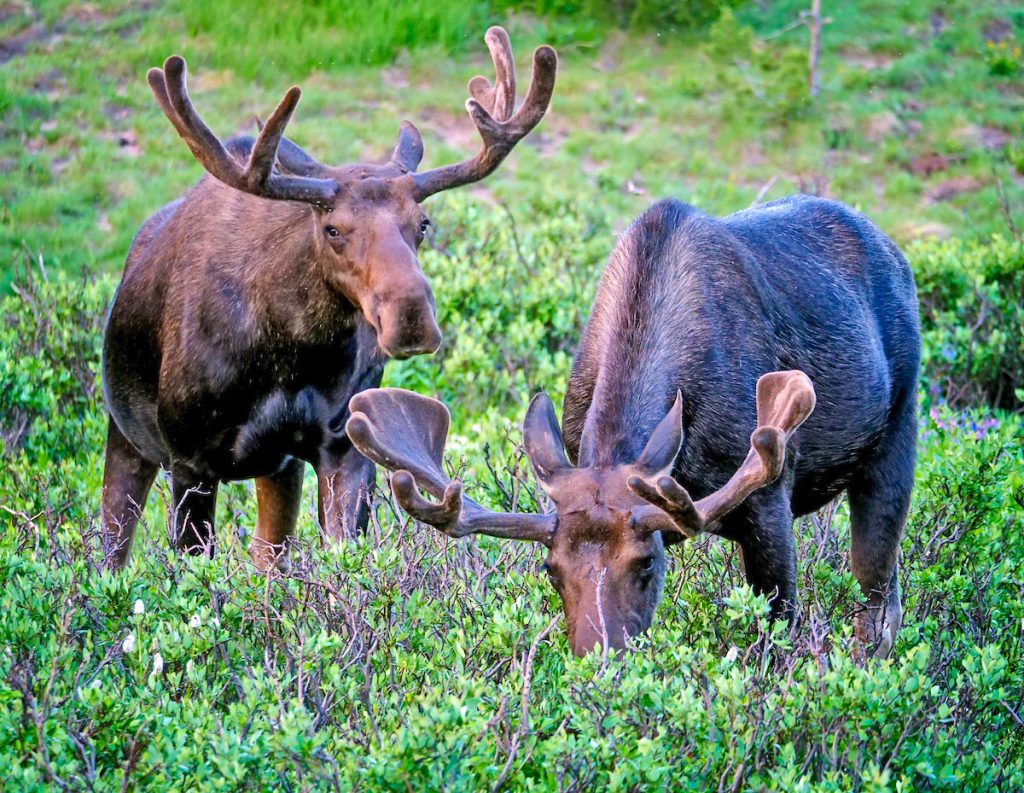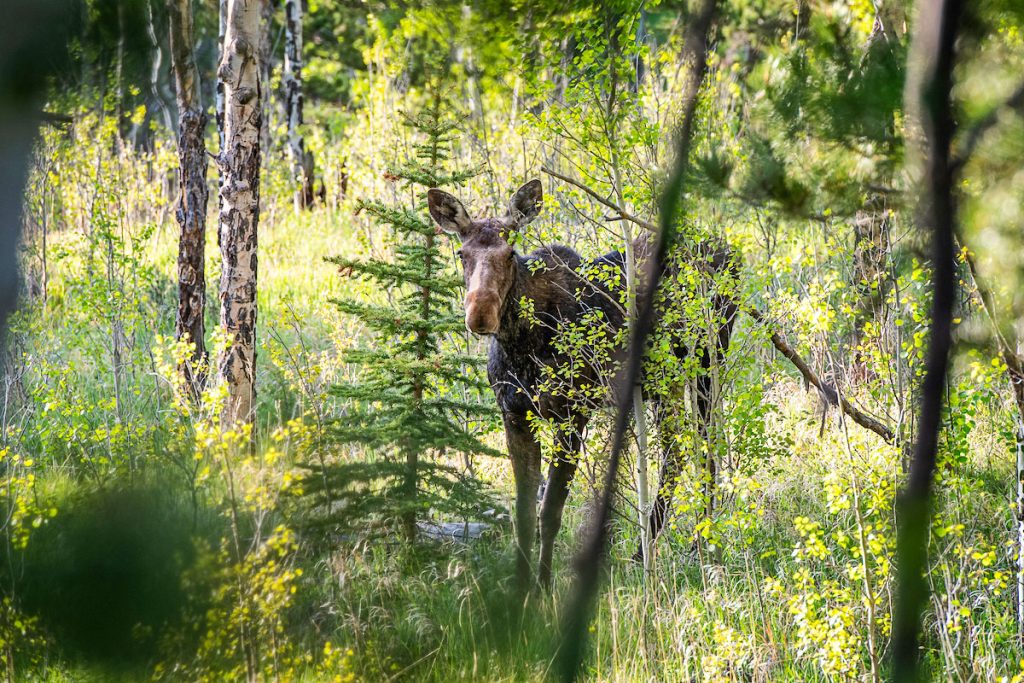Colorado living: Moose are relative newcomers

Moose are not indigenous to Colorado, having been transplanted from Wyoming and Utah beginning in the 1970s. Since then, they have thrived and spread out, and have even been spotted nearby, although rarely. Bull moose grow flattened, palmated (resembling a hand) antlers, which can reach up to five feet wide in larger and older bulls. Antler shape varies, with some appearing similar to those of an elk, especially on younger bulls.
Until the late 1970s, moose sightings in Colorado were rare. Records dating back to the 1850s mention a few moose wandering from the Wyoming area into northern parts of what would become Colorado. But the animals were only transient. Most of those records involved hunters harvesting, or just sighting a single bull moose.
In 1978, Colorado wildlife managers transplanted 12 moose from Utah to the North Park region of Colorado, near Walden. In 1979, a dozen moose were transplanted from Wyoming, and then a dozen more in 1987. Before too long, the moose population in North Park was doing so well that some were released in southern Colorado near Creede in the early 1990s, joined by more moose from Wyoming and Utah. Since then, Colorado moose have thrived and spread throughout Colorado. Today, the state’s moose population is roughly 3,000.
“Moose” comes from an Algonquin word meaning “eater of twigs.” Colorado’s largest mammal, moose can live up to 20 years in the wild. Their dark brown coats seem black at a distance and their legs can appear too long for their bodies. Moose are excellent swimmers and they are fast runners. “They can run up to 35 mph,” stated Kara Van Hoose, the public information officer for the northeast region of Colorado Parks and Wildlife (CPW).
Food and water motivate moose, and their natural habitat is riparian – along rivers, streams and lakes. They tend to follow water bodies to new areas, and sometimes they move into an area in which CPW does not want them. “If they linger longer than we would like, we can haze them by making loud noises and using lights to make them uncomfortable enough to move along,” Van Hoose shared.
In past years, moose have been spotted in The Village at Castle Pines, Highlands Ranch, Parker and Castle Rock, but this year there has only been one report of moose in the area.
According to CPW, it is uncommon to see moose in this vicinity, so a single report is unsurprising. Moose tend to be leery of noise like the traffic of I-25.
Moose attacks and interactions with humans are rare and they almost always involve dogs. Moose see dogs as a predatory threat, like wolves, one of their primary predators. “They will charge and stomp dogs, so please keep pets on a leash at all times in moose country,” Van Hoose stressed.
For more information about the Colorado moose, visit cpw.state.co.us and search “moose.”

The most common place to find moose is where there is a lot of brush to browse on, like Golden Gate Canyon State Park. Moose prefer habitats with willows, their primary food source, but they can also be found in sagebrush, high in the mountains, and in aspen, pine, and beaver pond-type habitats.
By Susan Helton; photos courtesy of Colorado Parks and Wildlife